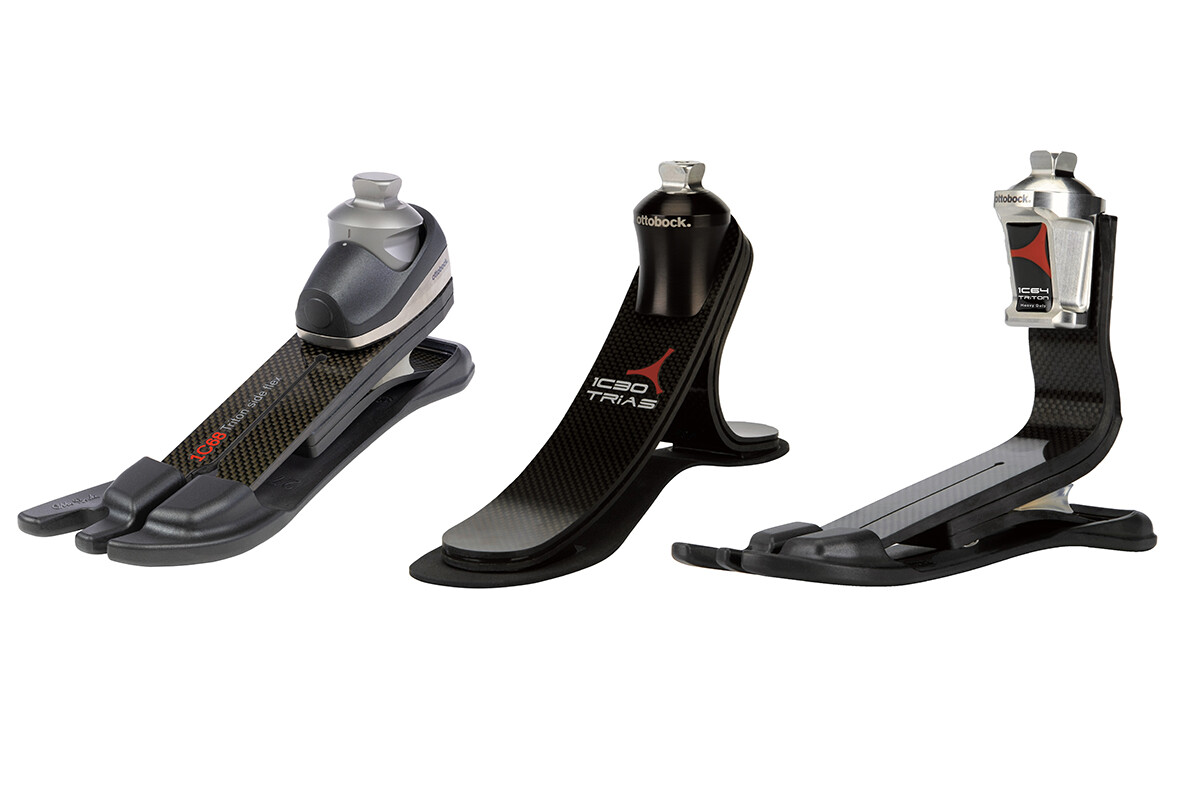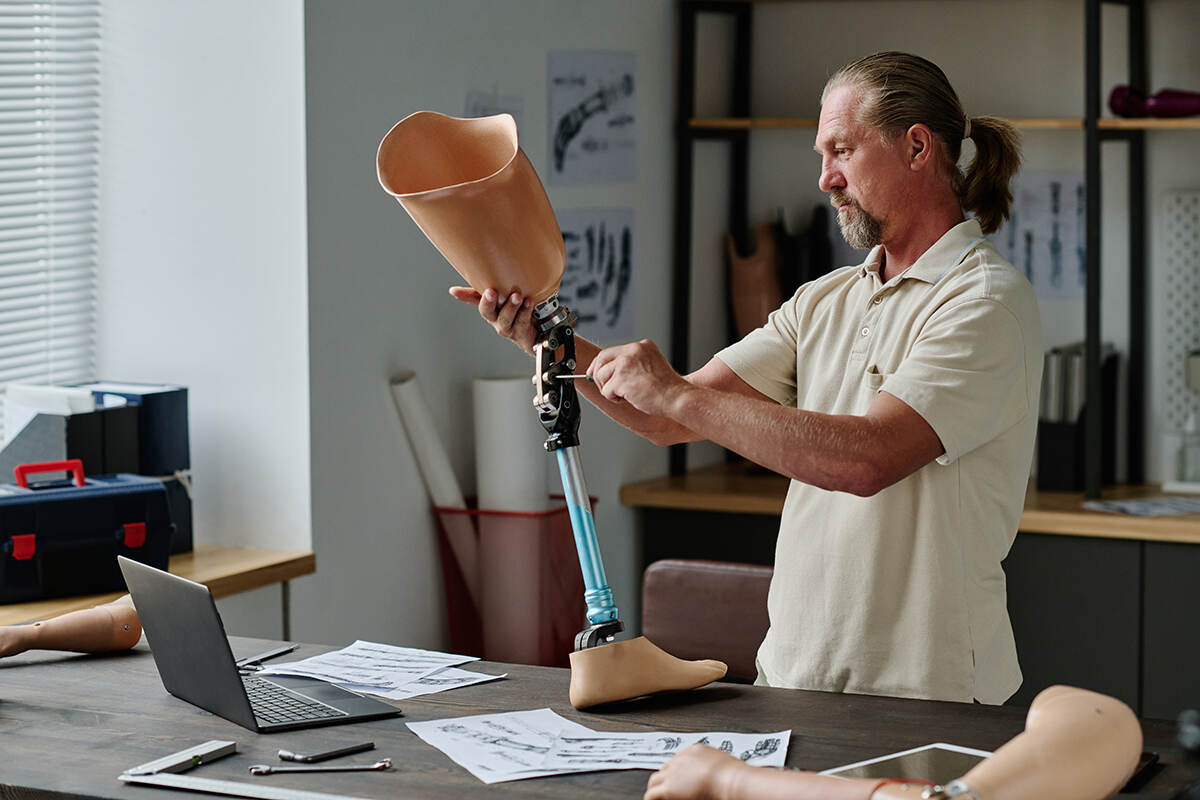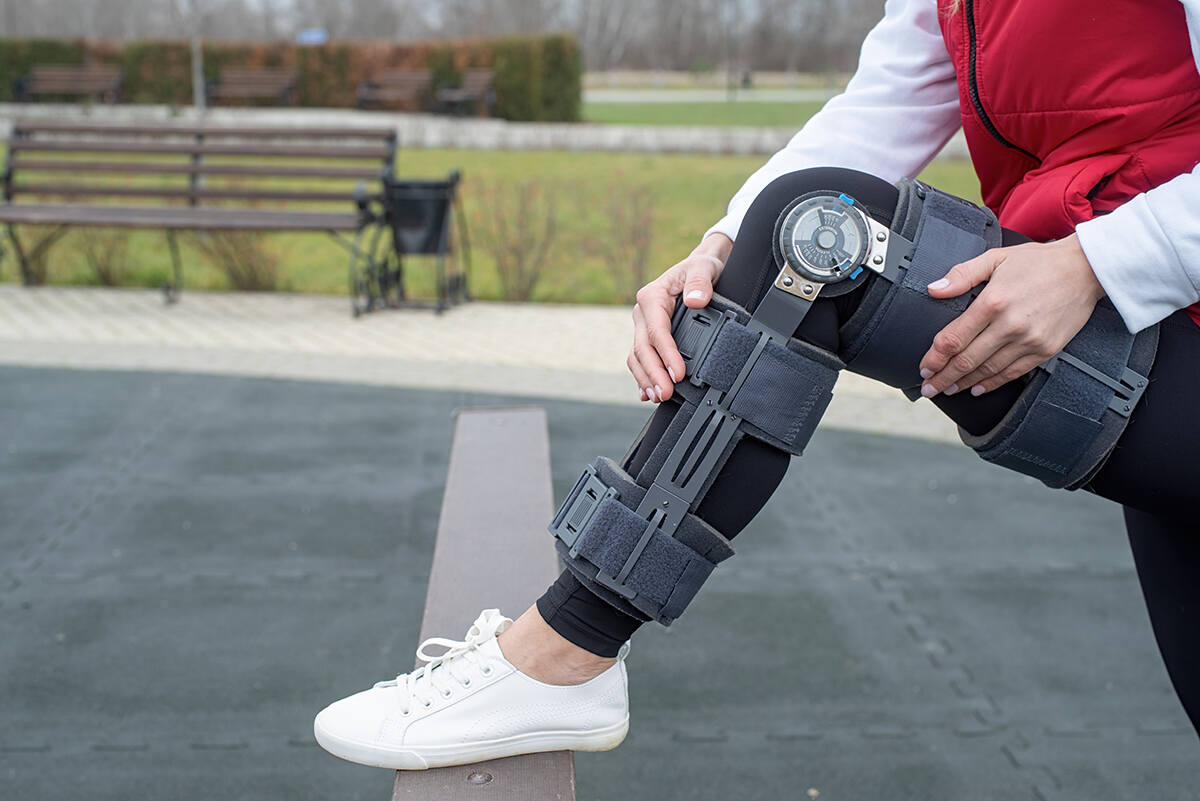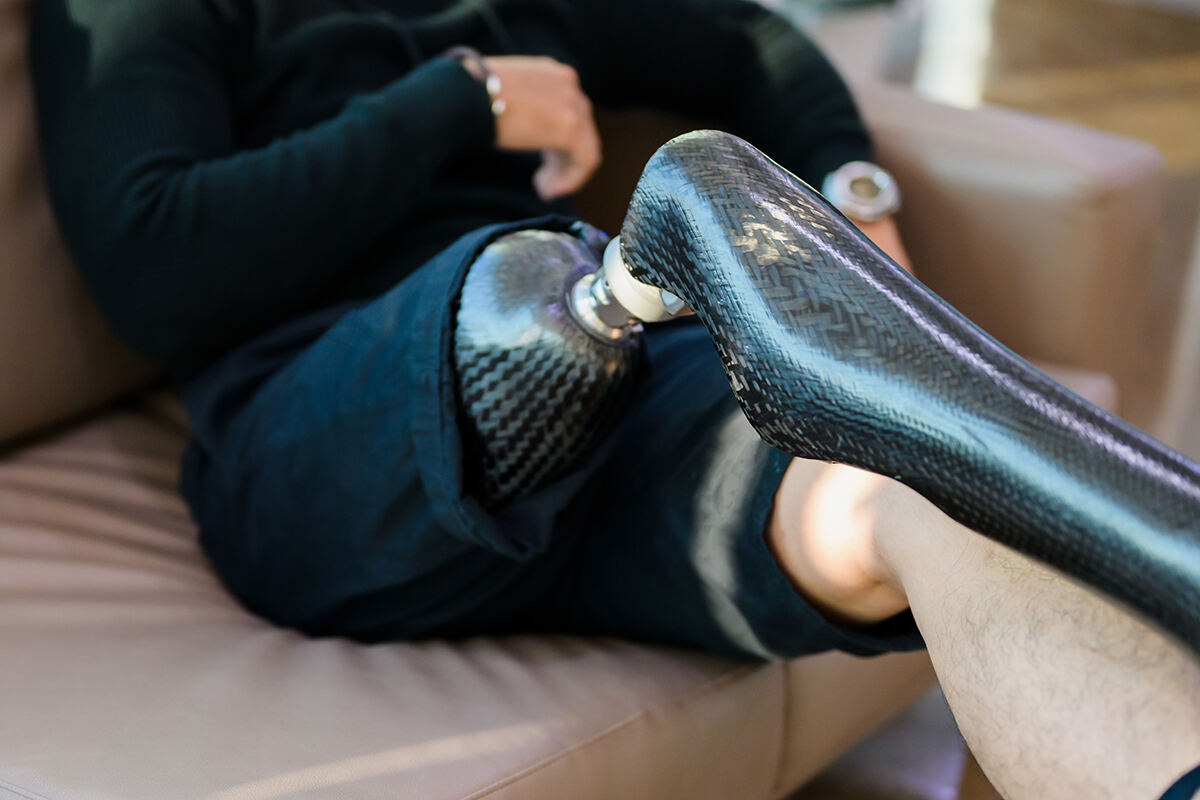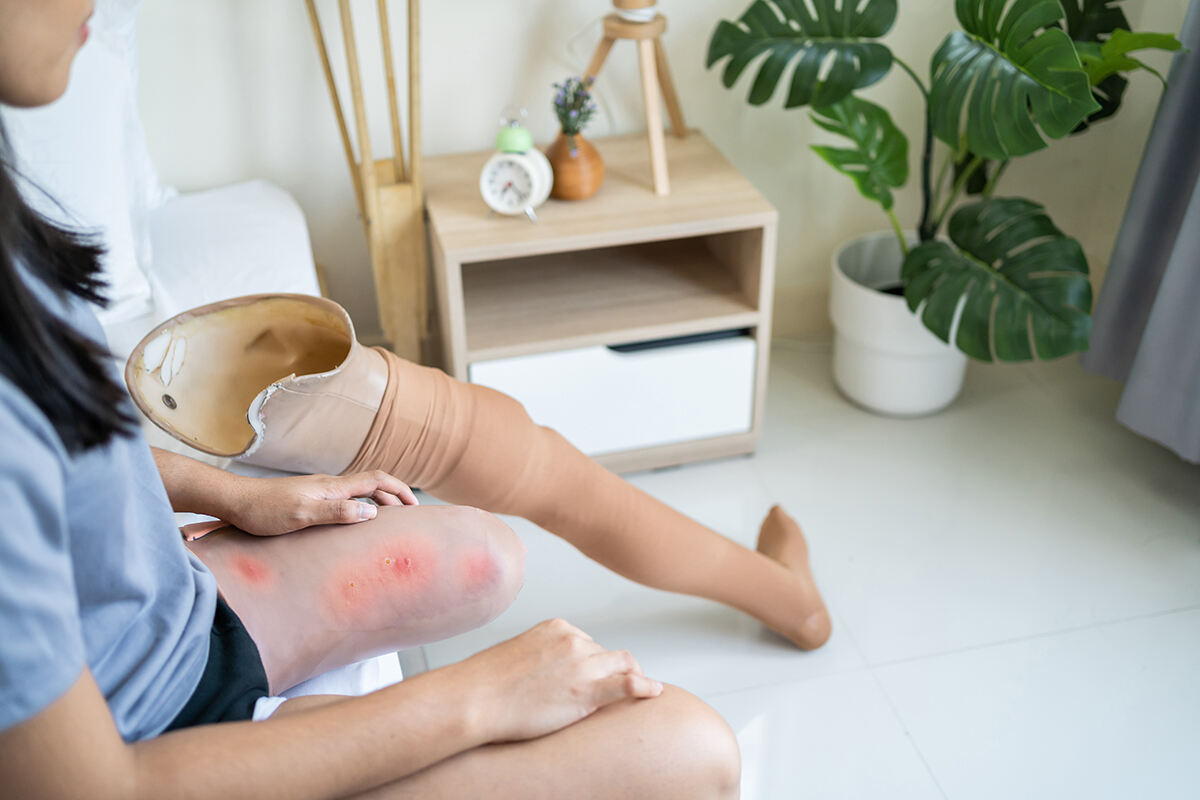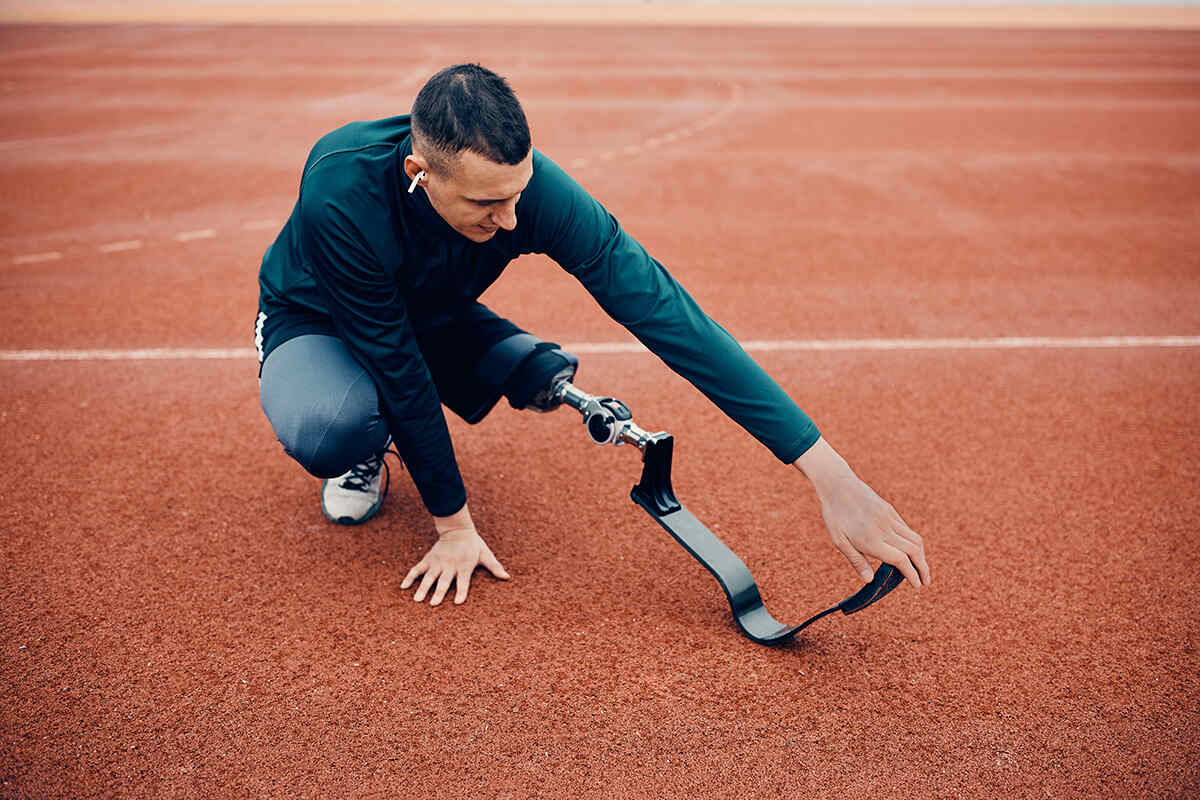Prosthetics have long been hailed as a triumph of medical engineering, a gateway to independence and a beacon of hope for those who have lost limbs. They are more than just substitutes for missing body parts; they are instruments of freedom, granting amputees the ability to navigate the world with renewed confidence and autonomy. The benefits of prosthetics are numerous and life-changing for those who utilize them.
Key Takeaways
- Prosthetics can provide improved mobility and freedom, restoring a person’s ability to walk or run.
- Upper Limb Prosthetics improve access to everyday activities and independence
- Rehabilitation support is essential for successful prosthetic use, resulting in increased self-esteem and emotional wellbeing of amputees.
Improved Mobility and Freedom
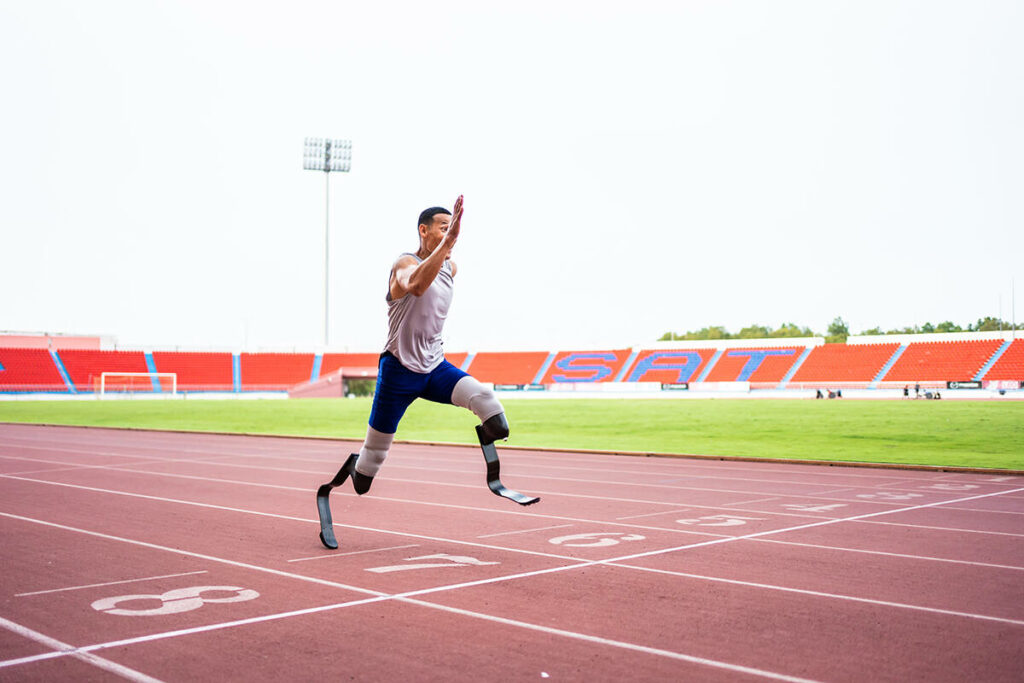
Consider the potential of a world where limb loss, such as an amputated limb, does not mean a life of limitations. This is the reality for countless amputees thanks to prosthetics. A prosthetic arm, for instance, is an artificial limb that replaces a missing body part, enabling individuals to regain a significant amount of their former mobility and functionality with the use of prosthetic limbs and other artificial limbs.
The primary and most obvious benefit of prosthetics, such as energy-storing prosthetic feet, is their versatility. The prosthetic legs and feet of today can provide a more realistic look and feel of a natural leg, providing greater mobility and confidence for amputees.
Walking and Running
Lower limb prosthetics, also known as limb prostheses, significantly enhance overall mobility and autonomy for individuals with an amputated leg by enabling walking and running. A leg prosthesis is specifically designed to replace as much of the capability of the initial limb as possible. The complexity of the amputation can impact the ease with which a prosthetic leg can be used.
For instance, it is typically simpler to utilize a below-the-knee prosthetic leg than an above-the-knee prosthesis. Mainly because the amputee of below-the-knee still has the knee intact which significantly enhances the user’s movability.
Upper Limb Prosthetics

Turning the page of a book, stirring a cup of coffee, typing on a keyboard – these are mundane tasks that we often take for granted. However, for those missing an upper limb, these tasks can present significant challenges.
Enter upper extremity prostheses, the game-changers that offer increased mobility for everyone with an upper extremity amputation.
Enhanced Comfort and Fit
Comfort and fit are two critical aspects when it comes to prosthetics. The interface between the residual limb (or stump) and the prosthetic components, such as the artificial prosthesis, is of the utmost importance.
Boosted Self-Esteem and Emotional Wellbeing
The advantages of prosthetics go beyond physical abilities; they also significantly boost the emotional wellbeing of amputees by potentially alleviating phantom limb pain.
Empowering people to accomplish tasks independently can significantly improve their self-esteem.
Technological Innovations in Prosthetics
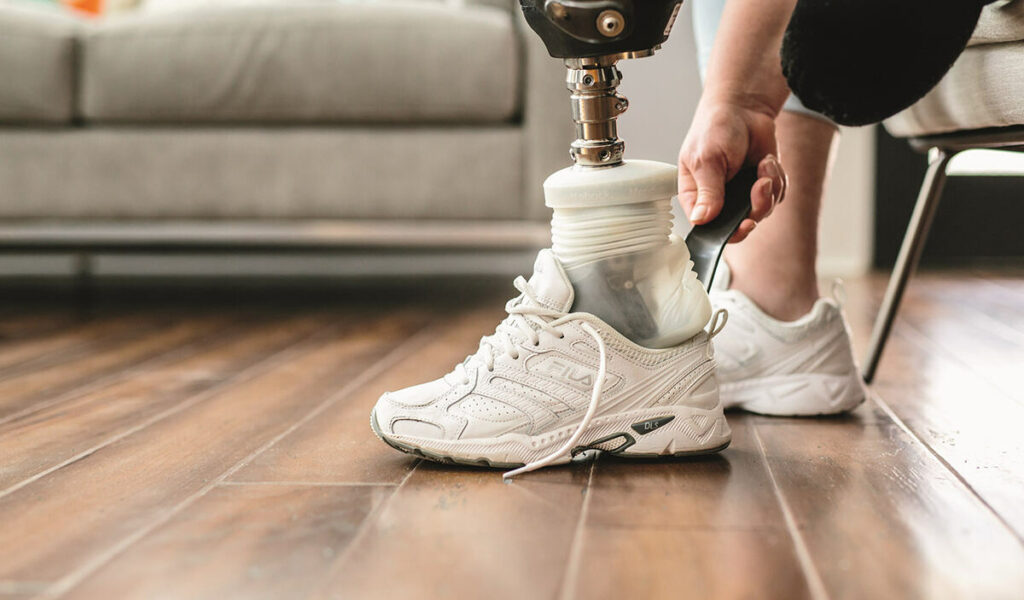
The evolution of prosthetics is a testament to human ingenuity. Over the past two decades, prosthetic technology has seen considerable development, largely in response to the needs of amputees. With the implementation of AI, calculations can be done by the blink of an eye which could also potentially speed up the process even more of developing new prosthetic products.
Rehabilitation and Support

While prosthetic devices, such as a prosthetic foot, can provide a renewed sense of mobility and independence, the journey to successful prosthetic use often requires extensive prosthetic rehabilitation and support.
Financial and Societal Benefits
Prosthetics do more than just enhance individual lives; they also bring financial and societal benefits. By decreasing caregiving expenses and enabling amputees to participate in the workforce, prosthetics contribute to the economy.
Considerations When Choosing a Prosthetic Device
Selecting a prosthetic device is a significant decision that requires thoughtful deliberation. Important factors to bear in mind include the cause of amputation, physical health, and lifestyle and also what type of amputation.
Real-Life Stories: Amputees Thriving with Prosthetics

Behind every prosthetic device is a story of resilience, determination, and triumph. Renowned amputees utilizing prosthetics, such as:
- Jeremy Campbell
- Aimee Mullins
- Hugh Herr
- Heather Mills
All provide a testament to the transformative power of these devices and that everything is possible if you just put your mind to it.
Summary
In an increasingly inclusive world, prosthetics are playing a vital role in ensuring that amputees are not left behind. They offer a renewed sense of freedom and independence, enhancing the quality of life for millions of people across the globe.
Frequently Asked Questions
How prosthetics improve the quality of life?
Prosthetics provide movement and independence, allowing people with limb loss to regain their self-image and confidence. They also enable people to perform everyday activities on their own, enhancing their quality of life. Custom prosthetics are available, enabling people to flaunt tattoos and personalize their devices.
How many people benefit from prosthetics?
Around 100 million people worldwide benefit from prosthetics and orthotics services, yet access to these services is limited, particularly in low- and middle-income countries.
What are three facts about prosthetics?
Prosthetics are artificial limbs that replace missing body parts, costing anywhere from $2000 to $100.000 depending on needs. Nearly 75 percent of amputations are caused by diabetes and cardiovascular complication and the most common type of amputation is a below-knee amputation. Many people report that their prosthetic limbs does not really limit their life, just makes it different.
What is the purpose of prosthetic devices?
Prosthetic devices are designed to replace missing body parts or improve functioning of existing parts, such as eyes, arms, hands, legs, joints, and teeth. They can help restore the quality of life for many people who have lost parts of their body.
What are the benefits of prosthetics?
Prosthetic limbs can help people with leg amputations regain their mobility and to some extent, mimic the look and feel of their real limb. In some cases, it can provide enough support to allow the user to walk freely without any aids.





